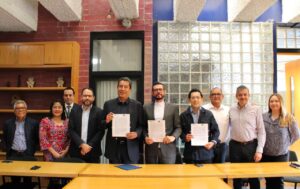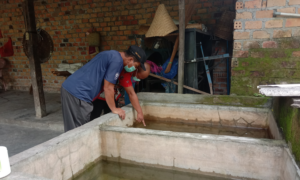Introduction
The emergence and global spread of the SARS-CoV-2 virus underscore the crucial role of genomic sequencing in pandemic readiness and response. During the COVID-19 pandemic, the virus rapidly evolved, giving rise to highly contagious variants. However, many less economically developed health systems were unprepared to address this unprecedented challenge. They lacked real-time data on emerging variants, leaving decision-makers without essential information to respond effectively.
Genomic sequencing proves a potent tool for virus identification, characterization, diagnostic test, vaccine, and treatment development. It also informs public health policies to mitigate pandemics’ impact. The COVID-19 crisis emphasizes the global need for comprehensive, accessible genomic sequencing capabilities. Leveraging lessons from this pandemic, the world must prioritize fortifying readiness and response against future epidemic threats.
Throughout the pandemic, the SARS-CoV-2 virus displayed an exceptional capacity to mutate. Creating new variants with heightened transmissibility and potentially altered disease severity. These variants had a global impact, causing case surges, healthcare system overload, and significant morbidity and mortality.
Analyzing the virus’s complete genetic code allows researchers to track transmission patterns, monitor genome changes, and detect new variants. This information offers valuable insights into the virus’s behavior, such as increased transmissibility, immune evasion, or therapeutic resistance. Armed with this knowledge, scientists can develop targeted diagnostics, vaccines, and treatments to combat specific viral strains.
Genomic Sequencing During the COVID-19 Pandemic and Beyond
The COVID-19 pandemic triggered an extraordinary global push for genomic sequencing, greatly advancing virus comprehension. Many nations swiftly developed virus genetic material sequencing capabilities. This resulted in a substantial rise in sequenced cases and countries creating their genomic data.
Just two months after releasing the first SARS-CoV-2 sequence in January 2020, 25 countries contributed their sequences to a global database. Regional sequencing centers played vital roles during the pandemic. Some, like those in South Africa, Nigeria, and Senegal, predated the pandemic. Others, such as the COVID-19 Genomics UK consortium, rapidly formed. These centers collaborated with hospitals and testing facilities, enabling real-time virus genetic makeup analysis and spread tracking.
The extensive sequencing efforts offered valuable insights into the virus’s evolution and epidemic behavior. Researchers detected new variants, assessed their transmissibility and immune evasion properties, and monitored their outbreak impact. Sequencing efforts peaked during waves caused by new variants, better justifying genomic surveillance investment.
Genome Sequencing Decline After COVID-19
However, as the world shifts focus away from the pandemic, there has been a decline in the submission of sequences to global databases. Additionally, genomic surveillance efforts remain highly unbalanced, being low- and middle-income countries (LMICs) the ones with less capacities. To maintain progress and be prepared for future pandemics, it is crucial to sustain the investments made in sequencing capacity and establish a robust system for rapid response and ongoing surveillance.
Perhaps the most significant aspect of genomic sequencing is that it can also be used to track, study and tackle other medically significant pathogens such as Zika, Ebola, influenza, chikungunya, Yellow fever, West Nile, to mention a few. The expanded sequencing capacity developed during the COVID-19 pandemic presents an opportunity to establish global surveillance systems for known and unknown viruses. By maintaining and redirecting existing sequencing pipelines, we can continue to access diagnostic samples, retain skilled personnel, sustain equipment functionality, manage databases, and secure ongoing funding.
Sequencing other viruses allows us to detect and respond to new outbreaks promptly. By adapting the existing SARS-CoV-2 sequencing model, labs can utilize a standardized set of protocols for various viruses, reducing costs and facilitating continuity. This approach streamlines data processing, enhances quality control. It also supports routine sequencing of multiple endemic viruses. It provides a framework for swift response to emerging viral threats, ensuring global preparedness and safeguarding public health.”
Addressing Disparities in Genomic Sequencing Capacities
Creating global genomic surveillance networks for viruses like SARS-CoV-2 comes with challenges, necessitating effective and equitable solutions. Despite sequencing over 14 million COVID-19 cases, the international distribution of sequencing remained uneven. To integrate virus genomics into public health, countries must prioritize bolstering their disease surveillance systems.
Acknowledging the need for fair access to genomic sequencing, the AHF Global Public Health Institute (GPHI) launched the Genomic Sequencing grant during the COVID-19 pandemic. This initiative’s primary goal was to enhance or establish sequencing capacities in LMICs, empowering them to generate scientific evidence for informing public policy decisions at various levels.
The AHF GPHI underscores the importance of timely data sharing, obliging grantees to contribute their findings to platforms like GISAID. GISAID is the most extensive initiative facilitating rapid genomic sequencing information sharing, serving as a vital resource for researchers, policymakers, and global public health authorities.
Enhancing sustainable initiatives in LMICs is pivotal for successful global genomic surveillance. These countries often lack resources, making funding access a primary concern. Long-term grants dedicated to supporting local sequencing programs in LMICs can help build capacity and foster leadership opportunities.
Scientific Community Insights
This objective is endorsed by Christine Carrington, Professor of Molecular Genetics and Virology and Head of the Department of Preclinical Sciences at The University of the West Indies, who shared her insights for this article:
“COVID-19 is no longer a public health emergency of internal concern, but it remains an on-going health issue, and with climate change, emergence of new infectious diseases and escalation of existing ones is a given.
In order to be better prepared for future health emergencies and also to mitigate the impact of pathogens that are currently of public health importance, it is critical that we expand and sustain the genomic surveillance capacity built in response to COVID-19 – both in terms of infrastructural and human capacity.
We should be working towards development of a sensitive global surveillance network that facilitates early warning and rapid effective responses. To achieve this, existing global disparities in the distribution of this capacity must be addressed.”
The World Health Organization’s draft pandemic prevention, preparedness, and response plan is finally recognizing the critical role of genomic sequencing. Integrating it into the pandemic accord ensures sustained funding, accessibility, and implementation. I also fosters standardized protocols, data sharing, and international cooperation.
Conclusion
Genomic sequencing has been crucial in the fight against COVID-19, enabling rapid vaccine and diagnostic test development. Its value extends beyond SARS-CoV-2. Adaptable sequencing frameworks call for expanded efforts to include other vital pathogens, enhancing global genomic surveillance for swift responses to emerging threats.
However, a comprehensive global surveillance system requires addressing sequencing disparities. Efforts should improve in-country and regional capacities, especially in LMICs. Integrating genomic sequencing surveillance into the World Health Organization’s pandemic plan and engaging the World Bank Pandemic Fund would ensure long-term funding and implementation, enhancing global pandemic preparedness.








